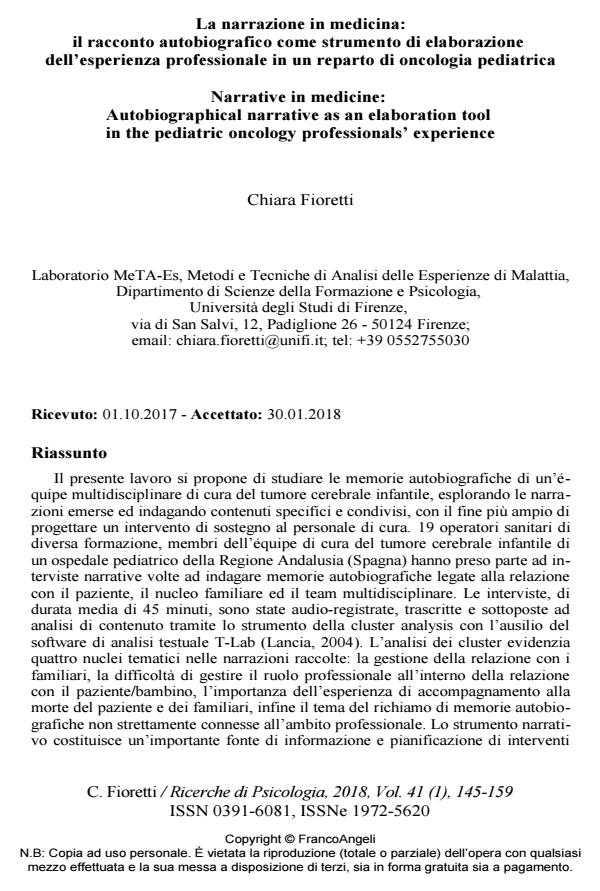Narrative in medicine: Autobiographical narrative as an elaboration tool in the pediatric oncology professionals’ experience
Journal title RICERCHE DI PSICOLOGIA
Author/s Chiara Fioretti
Publishing Year 2018 Issue 2018/1
Language Italian Pages 15 P. 145-159 File size 227 KB
DOI 10.3280/RIP2018-001011
DOI is like a bar code for intellectual property: to have more infomation
click here
Below, you can see the article first page
If you want to buy this article in PDF format, you can do it, following the instructions to buy download credits

FrancoAngeli is member of Publishers International Linking Association, Inc (PILA), a not-for-profit association which run the CrossRef service enabling links to and from online scholarly content.
The present study aims to explore autobiographical memories of a multidisci-plinary team dealing with pediatric brain tumors, exploring professionals’ narra-tives and investigating specific and shared contents, with the broader goal of pro-jecting a support intervention for the professional staff. 19 professionals members of the health staff caring for children with brain tumors took part to autobiograhical narratives aiming to explore their memories dealing with the relational experience with patients, their families and other members of the team. Interviews lasted 45 minutes and have been recorded, transcribed and analysed with the T-Lab software (Lancia, 2004). Cluster analysis has pointed out four topics in narratives: the management of relationships with families, the difficulty of maintaining the professional role in the relation with patients, dealing with death and disability in caring for children and personal memories not directly related with professional life. Autobiographical narrative is an important tool to collect information and to project interventions not only with patients but also with the professional staff. Furthermore, the present study helped researchers to identify problems and resources shared within the health staff in order to project an intervention focused on the empowerment of relational and clinical competences starting from collected narratives.
Keywords: Narrative, medicine, children brain tumors, professional health staff
Chiara Fioretti, La narrazione in medicina: il racconto autobiografico come strumento di elaborazione dell’esperienza professionale in un reparto di oncologia pediatrica in "RICERCHE DI PSICOLOGIA " 1/2018, pp 145-159, DOI: 10.3280/RIP2018-001011